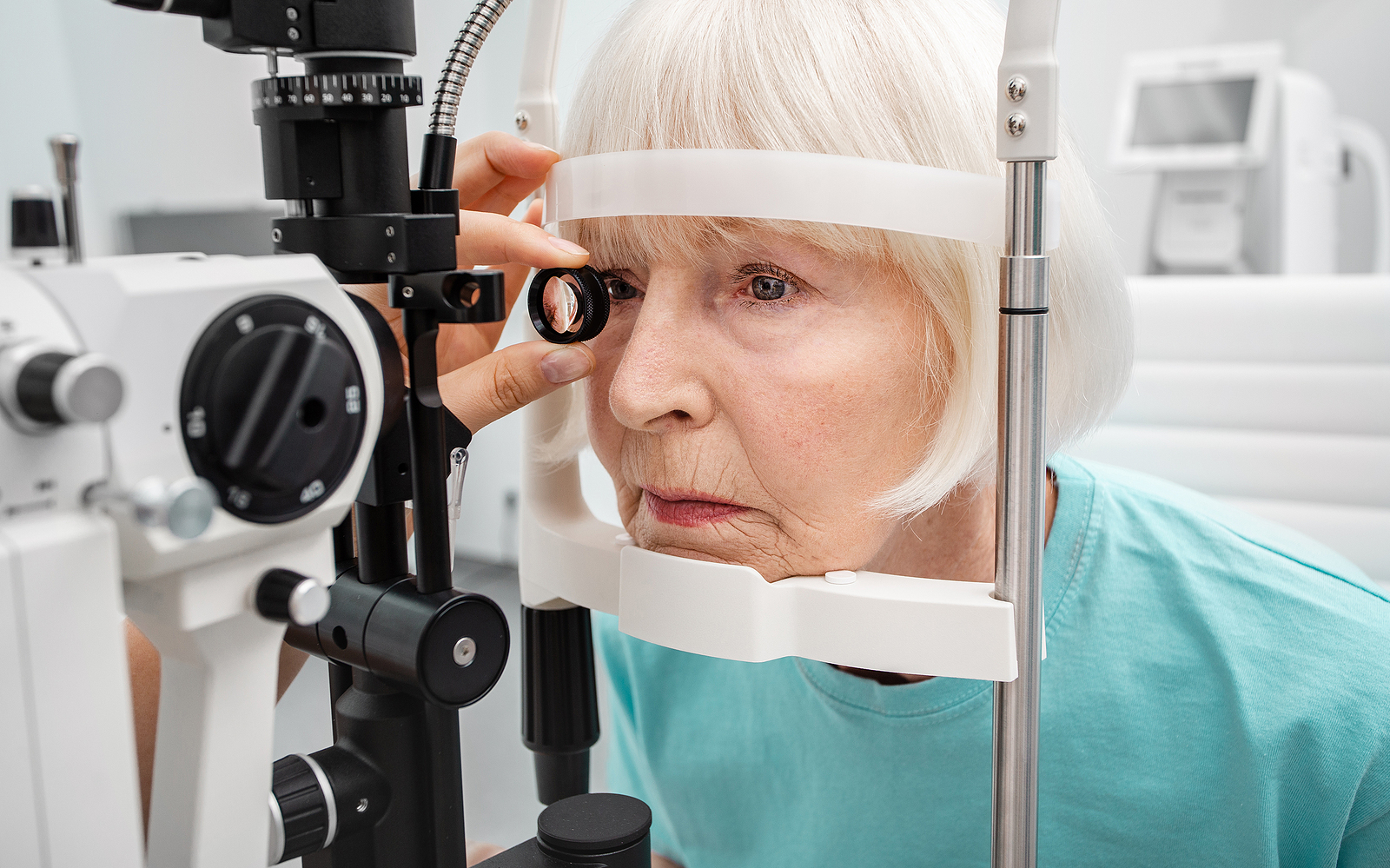Tests for Glaucoma and Understanding the Results

Glaucoma impacts the optic nerve cells and can lead to blindness if left untreated. It has no visible warning signs, making early detection somewhat difficult. At Swagel Wootton Eye Institute, we perform a series of tests to help us detect glaucoma. At Swagel Wootton Eye Institute, we recommend testing for glaucoma on an annual basis.
Who Needs Glaucoma Testing?
While every patient is screened for glaucoma at a comprehensive exam, if you are at least 40 years old and have a family history of glaucoma, it is recommended you come in for a checkup every year or two. If diabetes or other diseases that impact eyesight run in your family, we will include a glaucoma test in your annual checkup.
Some of the risk factors that serve as precursors of glaucoma include the following:
- Thin corneas: Those with thin corneas get glaucoma more often than those with thicker cornea.
- Heredity: If glaucoma runs in your family, you are at higher risk of getting it too.
- Age: This disease occurs more frequently in those over 65.
- Race: Those with African American ancestry are much more likely to develop glaucoma.
- Eyesight: If you have nearsightedness or diabetes, you also run a much higher risk of getting glaucoma.
Understanding Glaucoma Test Results
At Swagel Wootton Eye Institute, we perform many types of glaucoma tests. The results of these tests help determine whether you have the disease or not.
Perimetry Test
Typically, glaucoma affects your peripheral vision. So, it makes sense to test that first. Our highly qualified eye doctors in Mesa and Chandler use a special machine to perform this test. During the exam, you sit in front of the machine. A faint light appears in different parts of your field of vision. Some of these will appear in your peripheral vision to help the doctor determine whether you may have a problem.
If you cannot identify the lights when the intensity or size changes, this could indicate glaucoma. We will discuss the results of your exam and let you know if further testing is required.
Tonometry
We use eye drops to numb the eyes so that we can use a special instrument to measure pressure in each of your eyes. Normal results range between 12 to 22 millimeters of mercury. If you exceed these parameters, the doctor will discuss next steps with you.
Ophthalmoscopy
This test uses eye drops as well. During the exam, the solution in the eye drops causes your pupils to dilate. This allows the doctor to magnify your optic nerve to determine if there’s an issue with the color or shape.
If any of these tests indicate signs or symptoms of glaucoma, the eye doctor may ask you to come back for additional glaucoma tests. Additional glaucoma tests such as gonioscopy, nerve fiber layer analysis and pachymetry are additional tests that may be ordered if glaucoma risk is suspected. At this point, we will talk to you about how to manage the condition and whether you are a good candidate for treatment. It’s important to know that the goal of glaucoma treatment is to halt progression of the disease, either with medical therapy or laser surgery.
Contact Swagel Wootton Eye Institute to schedule an appointment with the top eye doctors in Mesa Chandler. We treat adults and children and offer full vision health services.
[DISPLAY_ULTIMATE_SOCIAL_ICONS]








